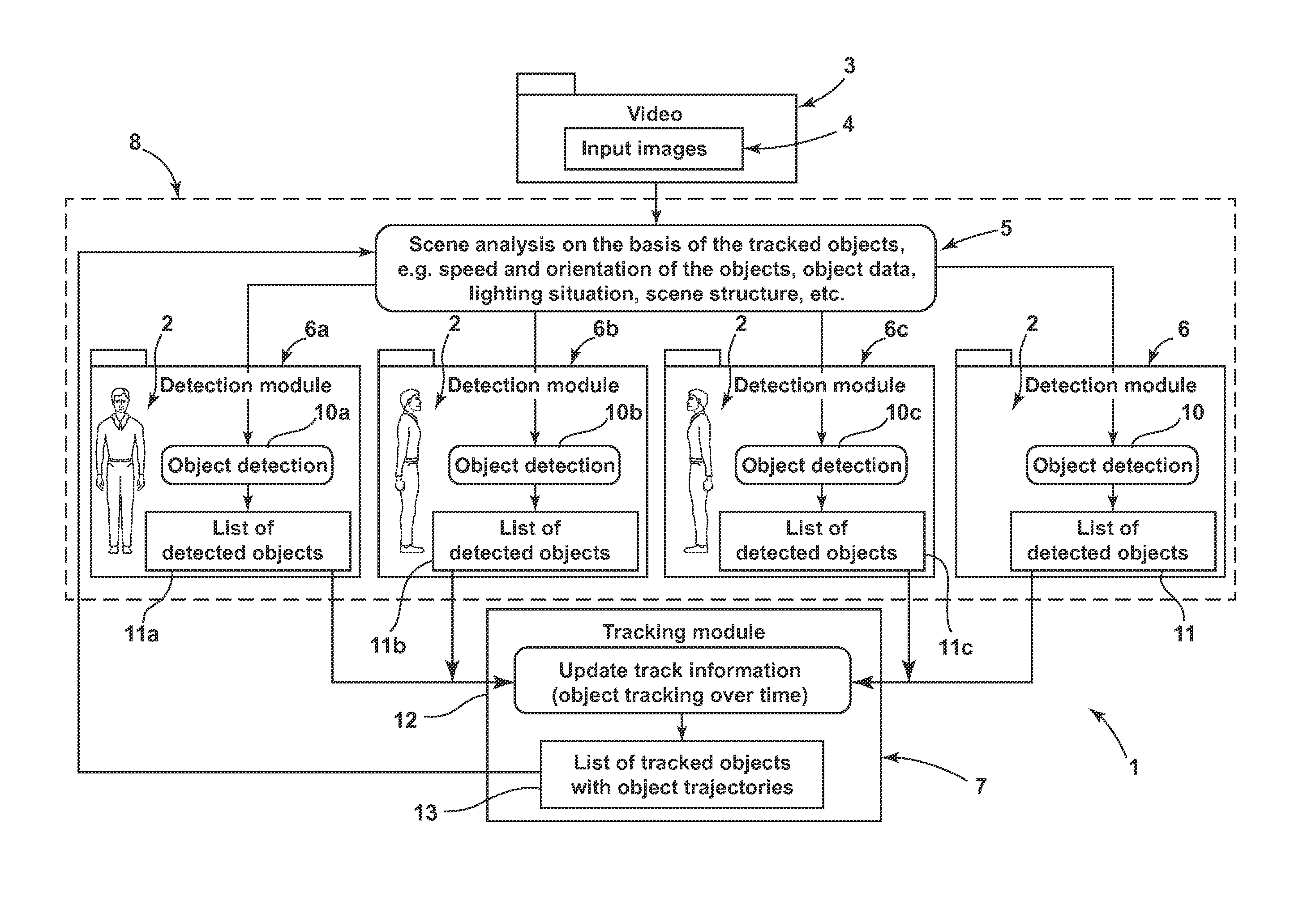Device and method for monitoring video objects
a video object and device technology, applied in the field of methods for monitoring objects, can solve the problems of increasing the number of incorrect detections, not reducing the recognition effect of all object models, etc., and achieves the effects of reducing the number of models, facilitating detection, and increasing detection capability
- Summary
- Abstract
- Description
- Claims
- Application Information
AI Technical Summary
Benefits of technology
Problems solved by technology
Method used
Image
Examples
Embodiment Construction
[0022]The FIGURE shows schematically as a block diagram an apparatus 1 for monitoring objects, which apparatus implements a method according to the invention for monitoring objects. The apparatus 1 comprises an imaging unit, which is embodied as video system 3 and generates an image of the real surveillance region. The video system 3 generates different images 2 in short temporal succession, which images when joined together produce a scene. The images 2, present as input images 4, are analyzed in a detector device 8. The detector device 8 comprises detection modules 6 and a model selection module 5, which selects or chooses the detection modules 6, 6a, 6b, 6c. In this case, objects present in the scene are detected and various object parameters are captured. By way of example, an object is classified, that is to say that the object parameters are compared with the parameter ranges of the predefined object models and assigned to an appropriate model or a group of models. In this cas...
PUM
 Login to View More
Login to View More Abstract
Description
Claims
Application Information
 Login to View More
Login to View More - R&D
- Intellectual Property
- Life Sciences
- Materials
- Tech Scout
- Unparalleled Data Quality
- Higher Quality Content
- 60% Fewer Hallucinations
Browse by: Latest US Patents, China's latest patents, Technical Efficacy Thesaurus, Application Domain, Technology Topic, Popular Technical Reports.
© 2025 PatSnap. All rights reserved.Legal|Privacy policy|Modern Slavery Act Transparency Statement|Sitemap|About US| Contact US: help@patsnap.com


